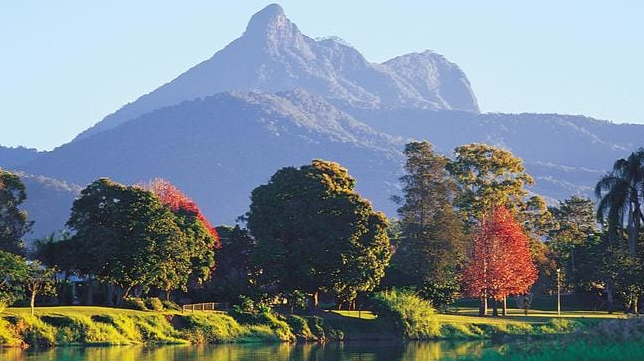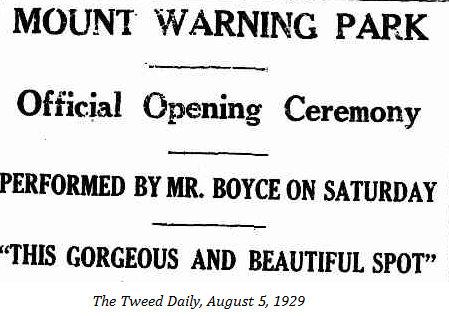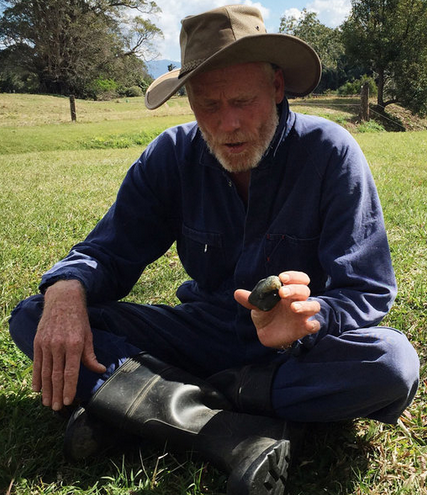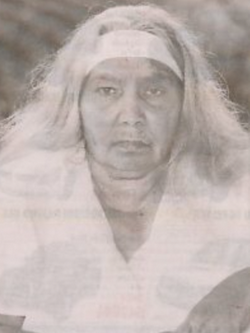
In October 2018 Parks Australia banned public access to the summit of Ayers Rock/Uluru for spurious safety and environmental reasons and contested cultural claims. They ignored the views of Aboriginal elders who had been born at the Rock, who had acted as climbing guides, encouraged visitors to climb and had made it clear by their words and actions that the famous ascent in no way represented a significant cultural issue. Instead, they favoured a noisy mob whose roots are elsewhere. The real reasons for the ban had to do with Parks Australia’s Canberra-based bureaucracy being unable to adequately manage the very low risk of being sued by walkers injuring or killing themselves. I fought the ban with facts, figures, primary sources and logic but, tragically for Australians and international visitors, logic was banished, documented fact counted for nothing and the ban went ahead. Adding insult to injury, Parks Australia destroyed the summit monument and removed memorial plaques to the dead in direct breach of the Rock’s 1987 World Heritage listing.
In the course of battling state and federal bureaucrats it became clear that Ayers Rock was only one of a large number of exhilarating walks that face being banned over the next few years. Walks in the Glass House Mountains in Queensland, South Australia’s Flinders Ranges, Stirling Range in Western Australia and other walks also face being banned for a host of reasons, none of which makes any sense. In attempting to justify a ban on world-famous climbing areas in the Grampians, Parks Victoria had the cheek to blame climbers for installing bolts into an art panel in a well known Aboriginal art shelter. The truth, as it subsequently emerged, turned out to be that those rusty anchors had been placed by previous park officials as part of a cage to protect the art work from damage. Despite decades of use by rock Grampians climbers there has been no damage to sites of indigenous significance or the natural environment.
We now see similar nefarious tactics being employed by the NSW Parks and Wildlife in its treatment of the Mt Warning Summit trail. If reason does not win, this historic bush walk will probably become illegal in May 2021 when NPWS says it will review the current “temporary” closure. Such a move will not only affect the summit walk but the entire park.
Mount Warning is one of the biggest ancient shield volcanoes in the southern hemisphere. It was active 23 million years ago and its eruptions covered much of northern NSW with lava. The eroded volcanic landscape and its stunning scenery has attracted tourists since access became possible in the mid 1800s. The summit is visited by over 100,000 keen bushwalkers annually. Many make the ascent to catch the sunrise, the summit being the first  place to catch the sun’s rays each day in eastern Australia. The views over the caldera complex, taking in Gondwana subtropical forests and the coast, are outstanding.
place to catch the sun’s rays each day in eastern Australia. The views over the caldera complex, taking in Gondwana subtropical forests and the coast, are outstanding.
The track to Mt Warning’s summit was established in 1909, and in 1929 more than 200 people, including many children, stood at the summit to witness the official opening of the Mt Warning National Park . The trail and associated infrastructure have not been well maintained by NSW NPWS over recent years, and has used exaggerated claims about safety, minor environmental issues and contested cultural claims as excuses to close the summit track and park. Like the fallacious justifications for banning public access at Ayers Rock and the Grampians, these excuses do not stack up. The real agenda seems more about trying to protect NPWS’s delicate bureaucrats, soft-bottomed rangers and its departmental budget than any real concern for the public’s welfare.
Let me start with the safety claims about Mt Warning, which are grotesque exaggerations.[1]. For instance, NPWS asserts the summit chain is unsafe. The truth is that it could be repaired or upgraded at little cost if funded by a small access fee.
After jumping the barrier in January 2021 to inspect the walk for myself, I found the NPWS has already ripped out the chain, pre-empting and telegraphing what is evidently the foregone finding of the imminent May “review”. What I found at the summit were lookouts in working order, albeit with timbers in need of sanding and paint after 20 years of exposure and official neglect. Environmental problems to do with visitor’s rubbish and toileting are unfounded or easily manageable where there is some small basis for concern. The only rubbish I found on my walk was a drink bottle on the rock scramble to the summit, likely left by a NPWS worker when the chain was being removed.
Speaking as a professional geologist, I rate NPWS claims of “extreme” risks to walkers from landslide and rock falls as grossly exaggerated and have filed an FOI request to examine on what basis they were made. Overall safety and environmental issues on the summit trail are par with other similar walks in the state; if NPWS closes this one then just about every other trail in the state must also be up for closure.
Cultural Claims
False claims about safety and environment are one thing, but the NPWS line on Aboriginal culture in the park take the misrepresentations to a whole new level.
Since 2006 there has been a sign at the base of the walk that reads:
Wollumbin (Mount Warning) has been a sacred place of significance to the people of Bundjalung since time immemorial. Wollumbin, along with other significant sites in its surrounds, provides a traditional place of cultural law, initiation and spiritual education. Under Bundjalung law, only specifically chosen people are allowed on this mountain. Climbing to the summit is against the wishes of Bundjalung Elders. Visitors are asked to respect the cultural and historical significance of Wollumbin at all times. Gurri tribes of the Bundjalung Nation
 These claims, including the very name applied to the mountain and the notion of a “Bundjalung Nation”, are strongly contested, and it seems there is another story that NSW NPWS have not properly acknowledged — indeed, have long kept secret. It would take something akin to an ICAC probe to sort fact from fiction.
These claims, including the very name applied to the mountain and the notion of a “Bundjalung Nation”, are strongly contested, and it seems there is another story that NSW NPWS have not properly acknowledged — indeed, have long kept secret. It would take something akin to an ICAC probe to sort fact from fiction.
There is indisputable evidence for different Indigenous stories and attitudes about the mountain, as revealed by other Aboriginal groups, that have been completely ignored by NSW park authorities. How it could post and dare to promote the Bundjalung Statement, reproduced above, while undoubtedly aware of well documented counter claims is beyond me.
It seems that, according to the Ngarakwal/Nganduwal people, Mt Warning was called Wulambiny Momoli, and was actually an “increase site” where hunting was forbidden so brush turkeys could replenish their numbers. We saw a few on our walk. The Ngarakwal/Nganduwal applied the name Wollumbin to a summit, owned by the McKenzie Family since the 1800s, to the northeast of Mount Warning. The current owner, James McKenzie, (above) has been fighting for many years to get the name returned to its rightful place[2].
Ngaraakwal Elder Marlene Boyd
Marlene Boyd was  a Ngarakwal elder who inherited the bootheram (dreaming) of her people from her mother Millie Boyd[3], who was the gulgan, the keeper, of Mt Warning.
a Ngarakwal elder who inherited the bootheram (dreaming) of her people from her mother Millie Boyd[3], who was the gulgan, the keeper, of Mt Warning.
In a 2007 interview just before she died with local newspaper[4] The Daily News, Marlene Boyd (left) stated
Mt Warning is not the ‘Fighting Chief’, as the Bundjalung claim. The real mountain gazetted as Mt Wollumbin is in Eungella and belongs to the McKenzie family. We are the Wollumbin tribe who are traditionally the Ngarakwal/Nganduwal … the original custodians of Mt Warning. We are not Bundjalung.
Boyd also accused Bundjalung elder John Roberts, organiser of the Wollumbin Festival, of retailing untruths about Mt Warning: “He has no right to come into my ancestral Ngarakwal lands and tell such lies about the cultural lore of the mountain.” Nor did she have any problem with people climbing the mountain:
I do not oppose the public climbing of Mt Warning — how can the public experience the spiritual significance of this land if they do not climb the summit and witness creation!
White Beech
Germaine Greer’s book White Beech[5], published in 2013, recounts her purchase of a property in the southeastern Queensland rainforest, across the border from Mt Warning. The book raises many questions about Aboriginal cultural knowledge about Mt Warning and further highlights misrepresentations and missing details by the NPWS in its official park literature and on park signage. In a chapter in which she seeks to trace the Aboriginal name for her acreage she writes of Ngarakwal/Githabul and Bundjalung claims about Mt Warning:
On August 31, 2009, Ngarakwal/Githabul activists made a submission to the Tweed Shire Council protesting against the perpetuation of the Bundjalung myth, the misuse of information from Indigenous elders and the lie of the dual identity of Mount Warning. According to Githabul elder Harry Boyd, Mount Warning is not Wollumbin the Cloud-Catcher and has nothing to do with any warrior king. The whole caldera is Wulambiny Momoli or ‘scrub turkey nest’, a ‘djurebil’ or ‘increase site’ where hunting is forbidden so that brush turkeys may replenish their numbers. He and his supporters denounced the ‘Bundjalung Nation’ as a white fiction. ‘There is no Bundjalung nation, tribe, people, language, culture, clan, nor horde, no Bundjalung anything.’
It was my turn to visit Ann in Melbourne, where I gave her a progress report.
‘The Ngarakwal, Tindale’s Arakwal, now say that the real Bundjalung are the Clarence River people; they also say that the Tweed Bundjalung are well aware that they are descendants of Islanders, and not Aboriginal at all.’
‘Is that true?’ asked Ann.
‘Who would know? These days you daren’t even ask the question. Most people would say it’s immaterial. Islanders lived with Aboriginal people and married into the clans, so they are entitled to self-identify. Besides the Torres Strait Islands are Australian.’
Wijabul elder Fletcher Roberts
Boyd’s claims on behalf of the Ngarakwal/Nganduwal people are supported by Wijabul elder Fletcher Roberts. In a January 2000 press statement[6] Roberts had this to say:
“They have had walking tracks up the mountain for decades, but no one has tried to stop people from climbing it before,” Mr Roberts said.
“This claim is a modern day invention.
“This claim is being perpetuated by someone who is overstepping his cultural responsibilities and he will have to face the consequences of Aboriginal lore for what he is doing.
“The white community needs to wise up to the Aboriginal sectors that try to use their lack of understanding of Aboriginal culture for their own purposes.
“The white community needs to make sure it identifies the true elders of an area.
Fletcher closed his succinct statement thus:
It is not unusual for clans to have disputes over boundaries, and this still happens today as it did in the past … but for people from Mullabugilmah (near Grafton) to claim that they have some jurisdiction over Mt Warning is too far a stretch of the imagination. If they still believe in the culture they should stick to their own areas.
Quadrant readers may well be aware of the overlapping and conflicting Aboriginal cultural claims that cloud many natural features across Australia. The issue here is that the NPWS has unfairly given one claimant group its official stamp of approval while completely ignoring others whose ties to Mt Warning appear much stronger. It is little wonder that it is the version which best suits the long-term desire to see the summit walk closed that it has been endorsed and promoted.
In its November 2020 information update about the park[7], NPWS give weight to a visitor survey that purportedly found
There is a high level of community acceptance of the significance of Wollumbin Summit and the message not to climb. Of the 858 domestic participants in a recent visitor research survey (DPIE 2019), 49 per cent stated they would not climb Wollumbin summit upon receiving the request not to climb, most of the remaining participants were unsure or needed more information, and only nine percent still wanted to climb Wollumbin.
One wonders what the survey results would look like if those asked were also provided with Marlene Boyd’s inspiration words — words that should be posted at the start of the walk:
I do not oppose the public climbing of Mt Warning – how can the public experience the spiritual significance of this land if they do not climb the summit and witness creation!
The public have a right to enjoy all our national parks and their well-established trails without having to pander or bow our heads to the irrational beliefs of a few and the over bearing tyrannical desires of nanny state public servants incapable of completing a basic risk assessment.
The case to ban the summit walk and close the park is built on a foundation of lies. Please let the NSW Environment Minister Matt Kean know your feelings before NPWS almost certainly closes it in May. His email: office@kean.minister.nsw.gov.au
Marc Hendrickx is geologist. He blogs at Right to Climb
[1] http://righttoclimb.blogspot.com/2021/01/chain-and-post-removed-at-mount-warning.html
[2] https://www.facebook.com/wollumbin.mountain/
[3] You can listen to Millie Boyd speak about Mt Warning on this Youtube post. If the clip, embedded above, doesn’t work for you, it can be found at https://www.youtube.com/watch?v=pdXD3TyVJf0 “Wollumbin” The Keeper of Lore, Elder Millie Boyd NSW National Parks 1977 Anthropological Study
[4] The Daily News Feb 24, 2007 See transcript at: http://righttoclimb.blogspot.com/2021/01/mount-warning-aboriginal-claims-about.html
[5] White Beech extract at http://righttoclimb.blogspot.com/2021/01/mount-warning-aboriginal-claims-about_14.html
[6] Copy and transcript available here: http://righttoclimb.blogspot.com/2021/01/mount-warning-aboriginal-claims-about_13.html
[7] https://www.nationalparks.nsw.gov.au/-/media/visitor/files/pdf/wollumbin-summit-track-closure-extended-nov-2020.pdf
 Sign In
Sign In 0 Items (
0 Items ( Search
Search










Once the principle is conceded, which it has now been with Ayres Rock, the deluge follows.
I agree. For a glance at where we’re headed consider the situation in New Zealand. There Iwi (Tribal) Management Plans are lodged by Iwi authorities with local Councils under the Resource Management Act 1991. Once lodged with Council, they are planning documents that Council is required to take into account when preparing or changing Council’s own Management Plans. This gives Iwi a “Voice” in local decisions approaching a veto. As a recent example one iwi held a veto over a $200 million bypass project, announced in 2017, that would see the main highway north go around a north Taranaki mountain to replace the unsafe road over it. The Iwi organization needed 75% of its 1000 members, some of whom do not live in the province, to vote in favour of the deal it had made with the NZ Transport Agency. The deal included substantial land and cash transfers to the Iwi and so the vote passed last year. The rest of the environmental consent process can now commence. A happy but expensive outcome, resulting from a veto power held in this case by less than 1% of the province’s population.
During the pandemic some Iwi set up road blocks on public roads to enforce quarantine areas.
Admittedly the NZ situation results from the Treaty of Waitangi, but anyone who thinks similar developments can’t happen in Australia is kidding themselves. At the very least it helps explain the desire for a Treaty and a Voice here.
We’re no longer allowed to travel interstate, let alone visit any of our tourist attractions. I’m heartily sick of this country now.
Welcome to the Brave New World of public liability.
How are they going to actually stop us from climbing it?
Lacebug. You are correct. The issue for many I suspect will be a potential fine for ignoring the BS signage. Be discrete!
Note if you do climb beware the carpark and indeed the road into the carpark have been targets of vandals over the years. In 2017 over 50 cars had tyres slashed on New Years say. My own car was keyed and a crude attempt made to Jimmy the lock when I was there a few weeks ago (cost $360 to repair). My next visit I’ll probably look at parking in Murwillumbah and heading out on a MTB, or get a taxi.
March, sorry to hear about your car. Seems those lefty hippy mung bean types must need cash to fuel their habit.